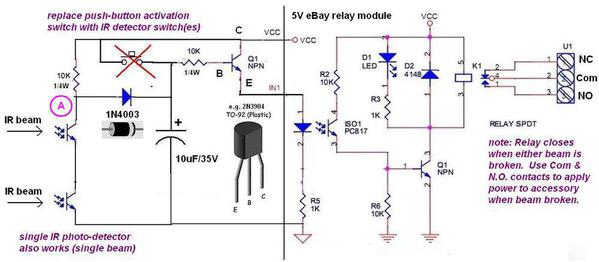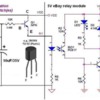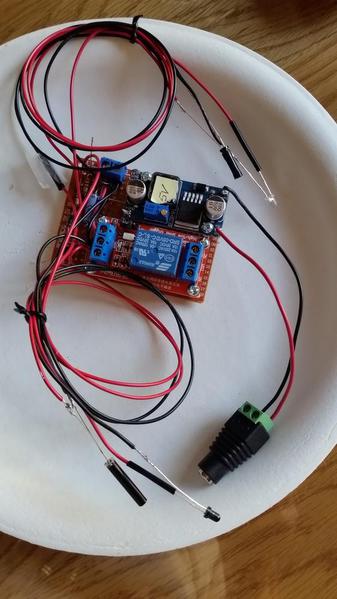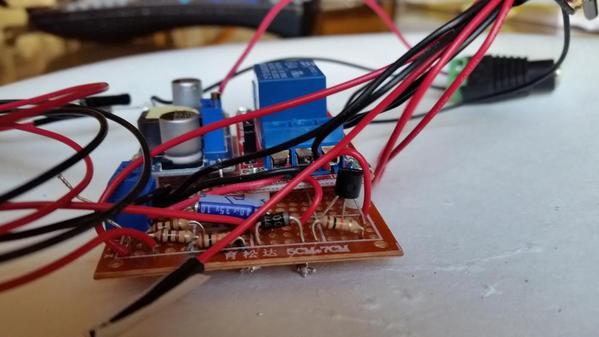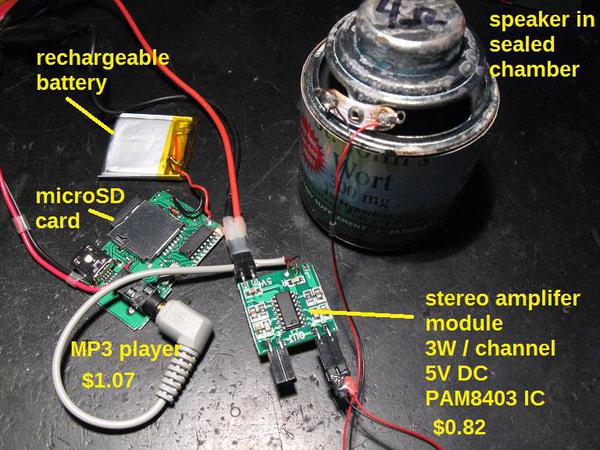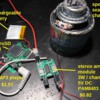Hi Kris,
Great to see you're hanging in there with this DIY stuff! Definitely not everyone's cup-of-tea but a fun part of the hobby for me anyway. OK, the sound player I showed earlier was hooked up as follows.
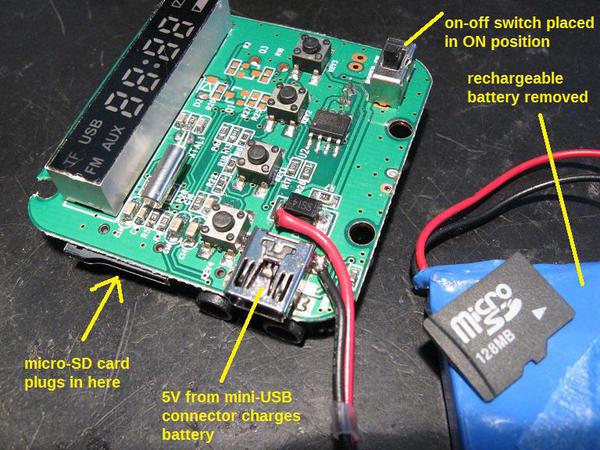
It's critical to carefully think through what's going on here. Specifically, when the crossing circuit turns on you now have 5V DC available. You want a sound module that starts playing when 5V DC is applied to it...and stops playing when 5V DC is removed. The "problem" with this cube player is it has an internal rechargeable battery. So while you could mechanically toggle the on/off switch to play/stop the sound, that's not what's available from the crossing circuit!
So what I did was remove the battery and place the on/off switch in the ON position. 5V DC is applied through the mini-USB connector. A cable is supplied but I just soldered in a red and black wire as shown. Since there's no battery, the module now turns on and off when 5V DC is applied.
Be absolutely sure that you don't apply more than 5V DC to the circuit!
OK, having said that. Here's my next audio project though I barely started. I found MP3 players for about $1 on eBay. No internal speaker, no FM radio, no fancy digital display, but it's an absolutely insane price and the thing actually works! Again, the MP3 file(s) are from a micro-SD card.
(Edit: ebay link changed):
http://www.ebay.com/itm/331414...414418636%26_rdc%3D1
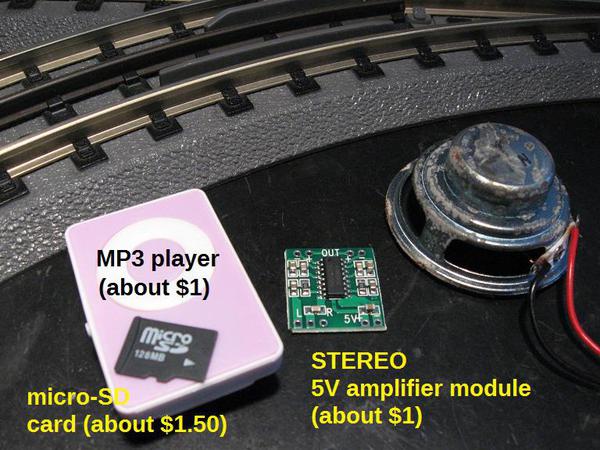
It's incredibly small and has a rechargeable battery inside it charged via a mini-USB connector. So I'm planning to do something similar as before where I want to simply apply 5V DC and it starts playing the MP3 file(s). So far I've found it will instantly start playing vs. the cube player which seems to "boot up" trying to decide what mode it's in before playing the MP3 file(s).
Of course this is meant to drive stereo headphones so I found a stereo amplifier 5V module for less than $1.
http://www.ebay.com/itm/390877...e=STRK%3AMEBIDX%3AIT
This is allegedly 3 Watts per channel which is plenty of power for a layout accessory sound. What I'm looking forward to is the STEREO. Not so much for a crossing gate, but for a station platform with the speakers separated you can have the sounds from both ends of a platform creating illusions of motion such as baggage carts going back and forth, or PA announcements from different directions, or the sounds of passing trains going from left-to-right or right-to-left, etc. All this for about $5...




